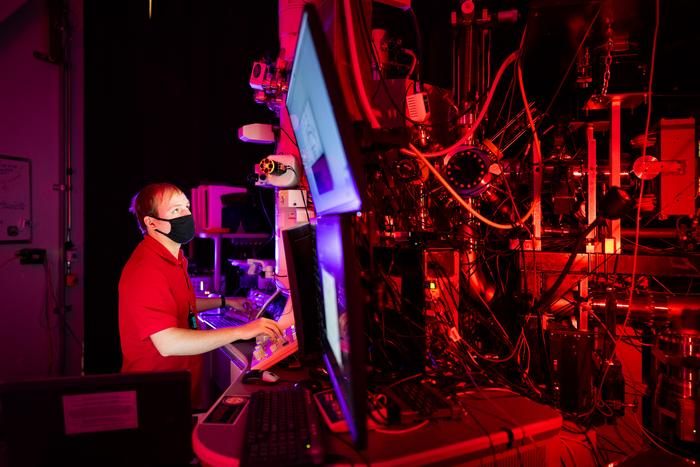A metal that fills in cracks in itself without human intervention could be the key to making self-healing machines and infrastructure that could save trillions in repairs and maintenance. Things get more alarming if you think about applying it to robots, but maybe we’re there already.
Metallic parts develop small cracks under repeated stress, known as metal fatigue. Over time this makes them more vulnerable to eventually breaking, often catastrophically. The solutions are obvious: use alloys that take longer to crack or replace parts more often.
However, Dr Brad Boyce of Sandia National Laboratories has a third solution – have the metal fill in the cracks before they become a problem. He’s now demonstrated that this can be done, albeit so far only on a very small scale.
“This was absolutely stunning to watch first-hand,” Boyce said in a statement. “What we have confirmed is that metals have their own intrinsic, natural ability to heal themselves, at least in the case of fatigue damage at the nanoscale,”
Self-healing materials exist, but so far these have mostly been plastics or concrete; certainly not metals. Heat can fill cracks in, but applying it conflicts with the self part of self-healing. “Cracks in metals were only ever expected to get bigger, not smaller,” Boyce said. That’s certainly what textbooks say. “Even some of the basic equations we use to describe crack growth preclude the possibility of such healing processes,”
The idea that such decay was not inevitable was first published by Professor Michael Demkowicz of Texas A&M University in 2013. At the time, however, it was purely theoretical, resulting from computer simulations. It’s taken almost 10 years to prove it can really happen, but this wasn’t a case of experimentalists doggedly trying to turn Demkowicz’s ideas into reality.
“We certainly weren’t looking for it,” Boyce said.
Visiting scientists were using Sandia’s facilities to observe how nanoscale cracks form in platinum when the ends were pulled at a frequency of 200 Hz. For the first 40 minutes, cracks formed as expected, but then 18 nanometers of a crack filled in, before regrowing in another direction. They call the process “crack flank cold welding induced by a combination of local stress state and grain boundary migration.”
Ryan Schoell uses Sandia National Laboratories specialized transmission electron microscope technique developed by Khalid Hattar, Dan Bufford, and Chris Barr to study nanoscale fatigue cracks.
Image Credit: Craig Fritz, Sandia National Laboratories
Boyce was aware of Demkowicz’s work and informed him. Demkowicz created a computer model to match what had been done, and confirmed this was an example of the phenomenon he predicted.
So long as the behavior is restricted to platinum, it’s obviously not relevant to bulk applications, such as crumbling bridges or airplane engines. However, Boyce said: “The extent to which these findings are generalizable will likely become a subject of extensive research.” Moreover, for small precision instruments that are hard to replace, for example on space missions, even platinum might be worth the price.
The scale of the problem metal fatigue causes is so vast that even affecting a small portion could make an extraordinary difference. “In structural applications, fatigue accounts for up to 90 percent of in-service failure,” the discoverers write.
“My hope is that this finding will encourage materials researchers to consider that, under the right circumstances, materials can do things we never expected,” Demkowicz said.
The findings are published in Nature.
Source Link: A Self-Healing Metal Has Been Discovered For The First Time
